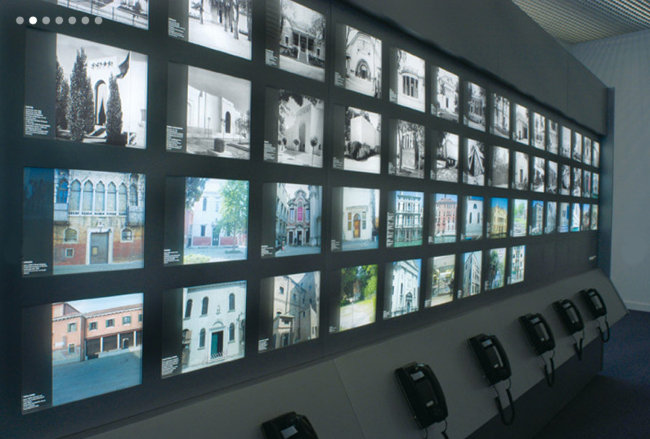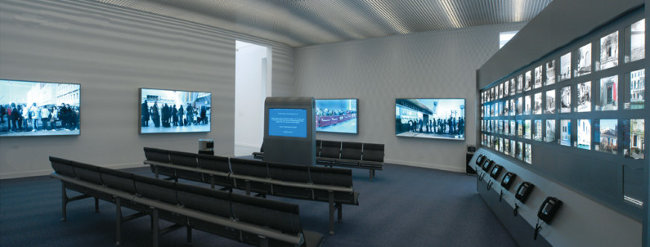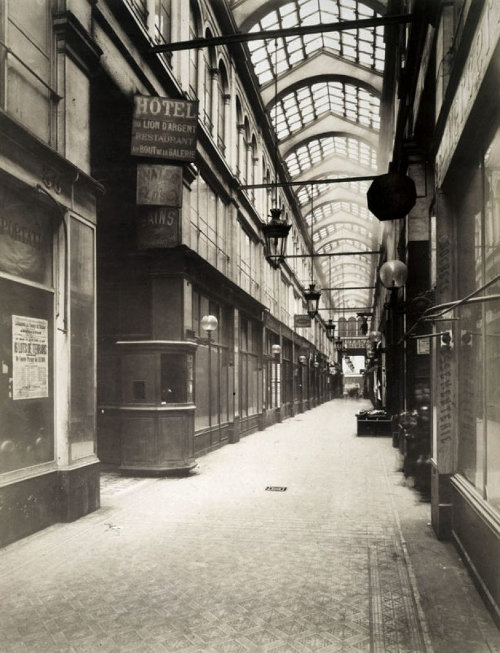A previous post discussed artists' use of the "just-past" to question the eternal new of Western commodity culture ("where there is always the new and it is always superseded by the next new"). Dan Graham had some interesting things to say about this, citing Walter Benjamin's research on the Paris Arcades. [1] Marc Augé is another theorist who has tackled this topic, in his essay L'art du décalage (The Art of the Shift) (2005), [2] which we'll discuss in this post.
In my own thinking about computer limitations back in the 2000s, I wasn't aware of Augé's writing but came to it recently by way of Pierre-Luc Verville's essay on my art and music. [3] Augé isn't concerned with computer art per se; he's mostly interested in how an artist who lives and participates in the modern world of global capitalism can somehow "shift" an audience to see outside this continuum.
Augé obliquely discusses Antoni Muntadas' installation in the Spanish Pavilion at the 2005 Venice Biennale. I say obliquely because there is very little physical description of the artwork: I had to find that elsewhere. According to Michèle C. Cone in The Brooklyn Rail:
...Muntadas showed details of his research on the history of the pavilions in the Giardini, the lovely grounds of the Biennale. His intention was to make perceptible the fact that the “Giardini” in 2005 looked quite different from what they had looked like earlier, especially during the era of Mussolini when, for example, the Italian pavilion was reconstructed to suit the Duce’s taste, and then rebuilt again after World War II. Much had been lost in translation since the first Venice Biennale, much had been added, but it took a Spaniard to unveil the less than transparent history of an Italian landmark. The project was named On Translation: I Giardini. [4]
Art historian Reesa Greenberg gives more descriptive detail: "On one side of an angled freestanding wall, he arranged same-size archival and current photographs of the façades of the pavilions in rows, similar in structure and glow to arrangements of images of real-estate properties for sale or hotels for rent. Viewers could learn more by picking up the attached phones." [5]
This grid of photos appears in a sort of airport waiting area, along with another series of photos of people standing in line to get into various cultural events. According to Greenberg, the room also had a kiosk with "rolling aphorisms and statistical facts taken from the world at large ... information about the number of tourists to Venice in the last year, the number of dead and wounded in a Buenos Aires nightclub, the number of hits a day on Google, the number of Colombian soldiers killed in an ambush, and so on." [6]
Augé writes about all this [machine-translated from French]:
A place and an institution rooted in time: this could well be the definition of the Venice Biennale. However accurate it may be in a sense, this definition raises many difficulties, at least today. The institution celebrates contemporaneity, but it endures. The place celebrates the spirit of the present time, but it consecrates the frontiers of the past. From then on, the contradictions are revealed and made visible. It only takes a little (but this little is everything) to bring them to light: contradiction between a recurrent celebration and the claim to embody the avant-garde, contradiction between the very idea of avant-garde and the representation of an eternal present that dominates contemporary representations, contradiction between the traditional organization of the Biennale (national pavilions, rivalries, competitions, prizes) and its ambition to express the state of artistic research in a globalized world, contradiction between the reference to Venice and the extra-territoriality of the Biennale...
Muntadas summarizes this set of questions by questioning not only the current status of Venice, but also that of the Biennale's setting, the Giardini, and that of the works presented there. The contradictions that jump out at us are no longer contradictions from the moment the artist... put[s] them into shape in order to question them. [T]he contradictions are always there... but change status by becoming the object of the artistic reflection.
We have to rely on Greenberg, Cone and others for descriptions of how historical photos of the Giardini "put into shape" the contradictions of the Biennale. Presumably the kiosk and telephones visible in the photos don't offer Cone's politically-tinged history of the Biennale grounds above. How are we supposed to know this? Augé writes:
[A]rtists have the difficult but essential task to signal to the public of the consumers, of which they are also a part, that they are, as artists, external to the system of production / consumption... This signal, to be perceptible, can only be the product of a ruse. If the classic putting at distance is impossible today [because art-making is part of a commodity system --tm], it is nevertheless possible to put the accent on the [inconsistencies] and tensions of a system which sacralizes the present and the image. By attacking the heart of the system in this way, we translate its spirit. Because it is less a question of attacking, here, than of "translating", as Muntadas says. The art does not aim primarily to subvert, but to show. It is up to the society or the public authorities to question, if the fact of showing takes in their eyes a subversive character. But to succeed in seeing, in order to show, it is necessary to find angles of view, to experiment, to displace the admitted limits, to shift the observation in time and space.
Ultimately, it seems, viewers have to puzzle it all out -- why does this pavilion look like an airport? what is the content of these photos? why are they placed here? -- and make their own connections. Augé implies the artist must "show" rather than tell. We don't know how many Biennale viewers came to the same conclusions about the work as Augé, Greenberg, and Cone in their essays. Probably very few? At best we can say the ingredients for a shift in perception about the Biennale and its own agendas and contradictions are here.
NOTES
1. Dan Graham, "Legacies of Critical Practice in the 1980s," Discussions in Contemporary Culture, Hal Foster, ed., Dia Art Foundation, 1987.
2. Marc Augé, L'art du décalage, Multitudes, vol. 25, no 2, 2006, p. 139-147.
3. https://leparergon.org/index.php?title=Tom_Moody (French) https://www.tommoody.us/archives/2021/06/08/le-parergon-tom-moody-bio/ (English)
4. Michèle C. Cone, Antoni Muntadas and Translation, The Brooklyn Rail, Nov. 2014
5. Reesa Greenberg, The Currency of Time: Muntadas and I Giardini, Ciel Variable, Fall 2007
6. Id.








